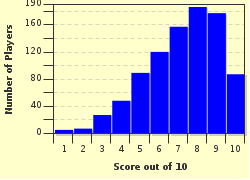Quiz Answer Key and Fun Facts
1. One of the greatest American presidents won his first leadership position after gaining the respect of his community in a wrestling match. Can you name this famous rail-splitter who became a militia captain largely on his reputation as a grappler?
2. Another American president could be called one of the first mixed martial artists. He compensated for a sickly nature in childhood by taking boxing lessons, wrestling in prep school and college, then taking up judo as president. Who was this president who loved "the strenuous life" - and who has taken his rightful place on Mount Rushmore?
3. This great American writer made his name glorifying "manly" pursuits like violence - and he did his best to live the part as a boxer, sparring with champion Gene Tunney and promoting small boxing events around his Key West home. Who was this author of "For Whom the Bell Tolls" and "The Old Man and the Sea"?
4. Perhaps the best-known rock singer of all time, this great performer began studying karate during his military service. Who was this "King of Rock and Roll" who taught karate in Memphis between tours, leaving his opponents "All Shook Up"?
5. Figure skaters aren't necessarily considered the most fearsome of athletes, but this two-time Olympic silver medalist is a clear exception. Who is this karate black belt and kung fu practitioner who medaled for Canada in 1994 and 1998?
6. This musician probably had a broader impact on jazz than any trumpet player after World War II. Unfortunately, he also developed a nasty heroin addiction, which he was inspired to kick by his desire to be a competitive boxer. Who was this "Picasso of Jazz" who was trained in the 1950s by middleweight contender Bobby McQuillen?
7. This towering figure of American music honed his legendary footwork as a professional boxer, posting a record of 16-1 before turning to singing and bandleading full time. Who is this widely-acclaimed "Godfather of Soul" who exhorted his fans to "Say It Out, Say It Loud (I'm Black and I'm Proud)"?
8. This world leader, a former head of his country's intelligence service, was also acclaimed for his judo (attaining the rank of 6th dan - the level ABOVE black belt) and his sambo (a martial art emphasizing submission fighting). Who is this polarizing figure who first became prime minister of his post-Communist country in 1999?
9. Prior to the twentieth century, the preferred mode of "gentlemen's" combat was a style of wrestling called "collar and elbow," wherein the two combatants began in the "lock-up" position familiar to fans of professional wrestling. What American general and statesman was a Virginia champion in this style at the tender age of 18?
10. Finally, each of these great comedians has a background as a boxer--or at least a paid sparring partner. Each, of course, except one. Which?
Source: Author
stuthehistoryguy
This quiz was reviewed by FunTrivia editor
bloomsby before going online.
Any errors found in FunTrivia content are routinely corrected through our feedback system.

